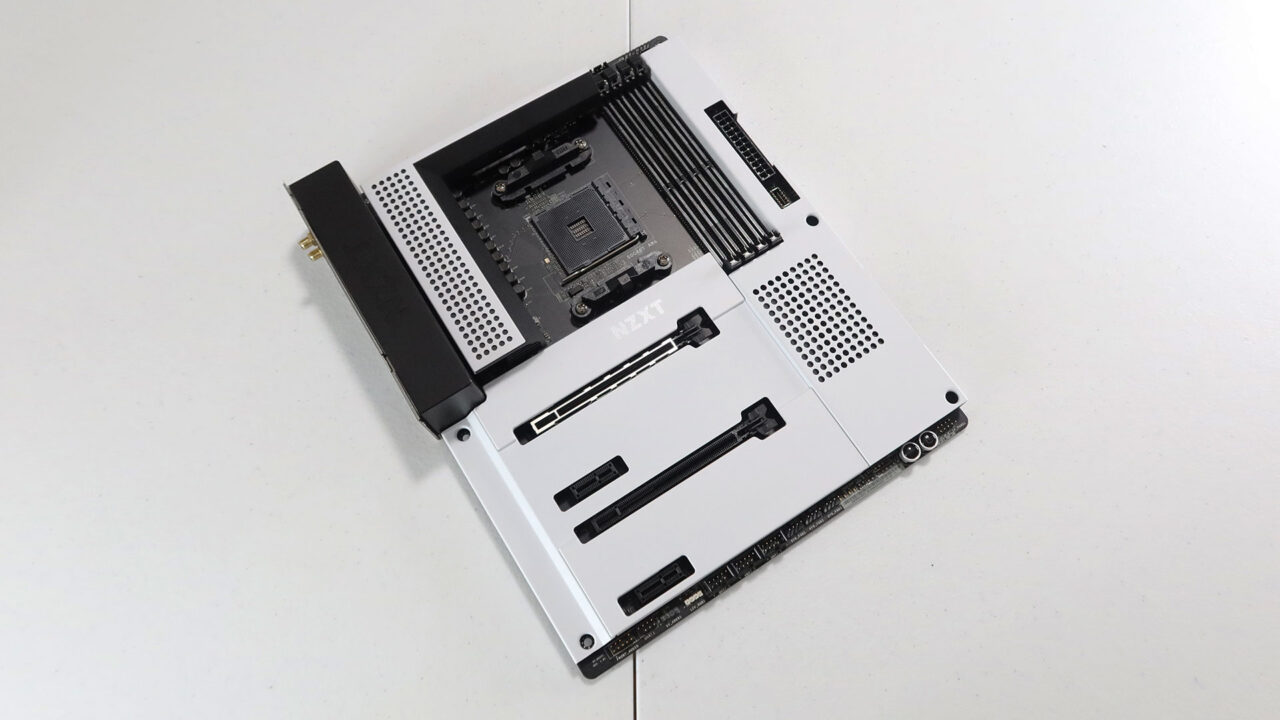NZXT expanded its slowly growing motherboard lineup even further last year with the introduction of its first AMD motherboard, the N7 B550. Partnering with ASRock to create the new board, the N7 B550 features several improvements from its previously released Intel counterpart, the NZ Z490, including more USB ports and WiFi 6E, among others. While it’s one of the pricier B550 motherboards in the market, the N7 B550 attempts to justify it with its unique design and array of features.
Packaging and Inclusions
The N7 B550 comes in the company’s signature packaging, with an image of the product accompanied by its name in big, bold letters as well as a short description of the product in smaller text. The interior packaging is made from plain cardboard. NZXT has only included the necessities with the N7 B550. Apart from the manual, screws for the two M.2 slots, and the two antennas for the built-in WiFi, the company has only included four SATA cables in the box (two 90-degree and two straight cables).
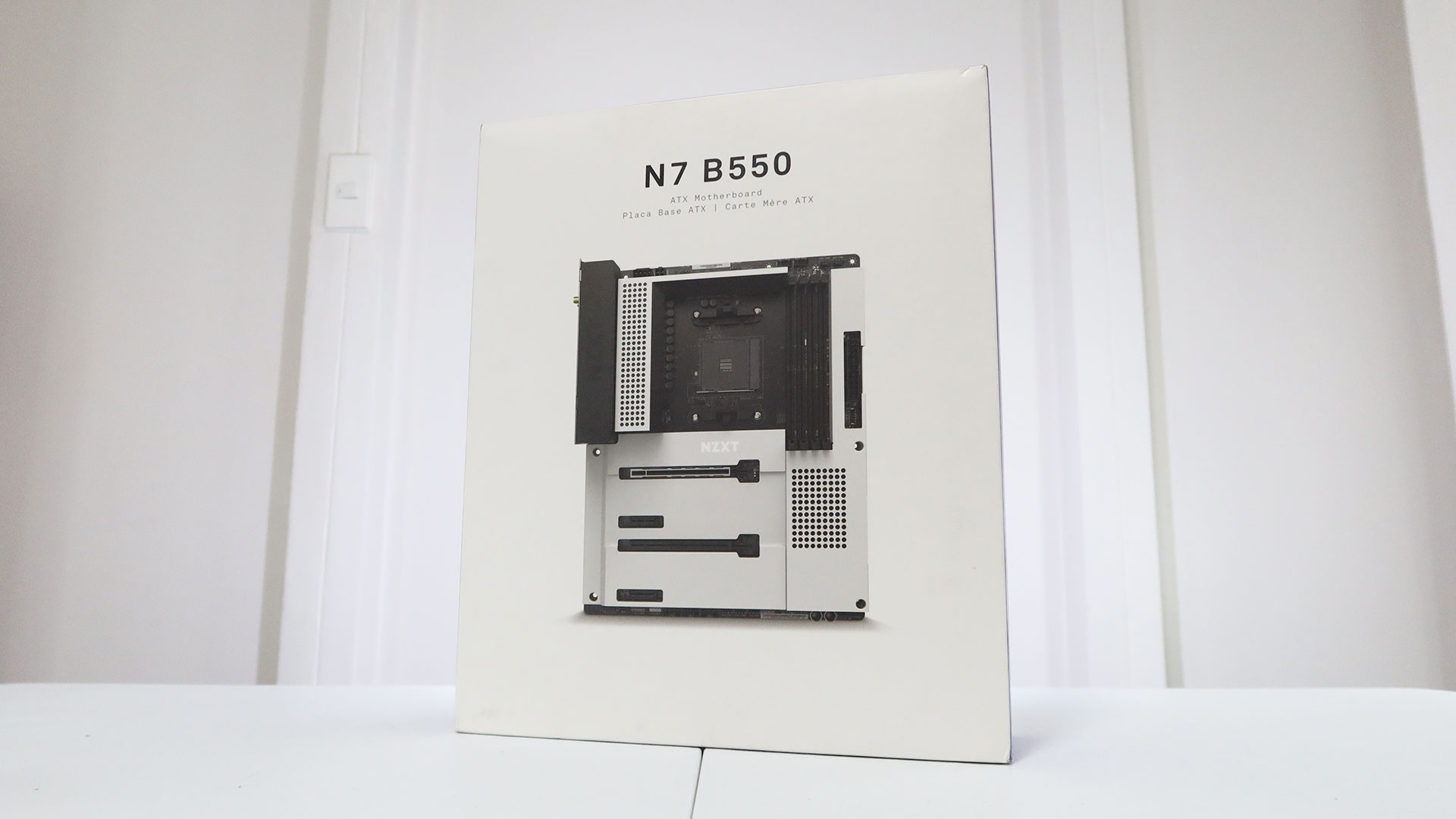
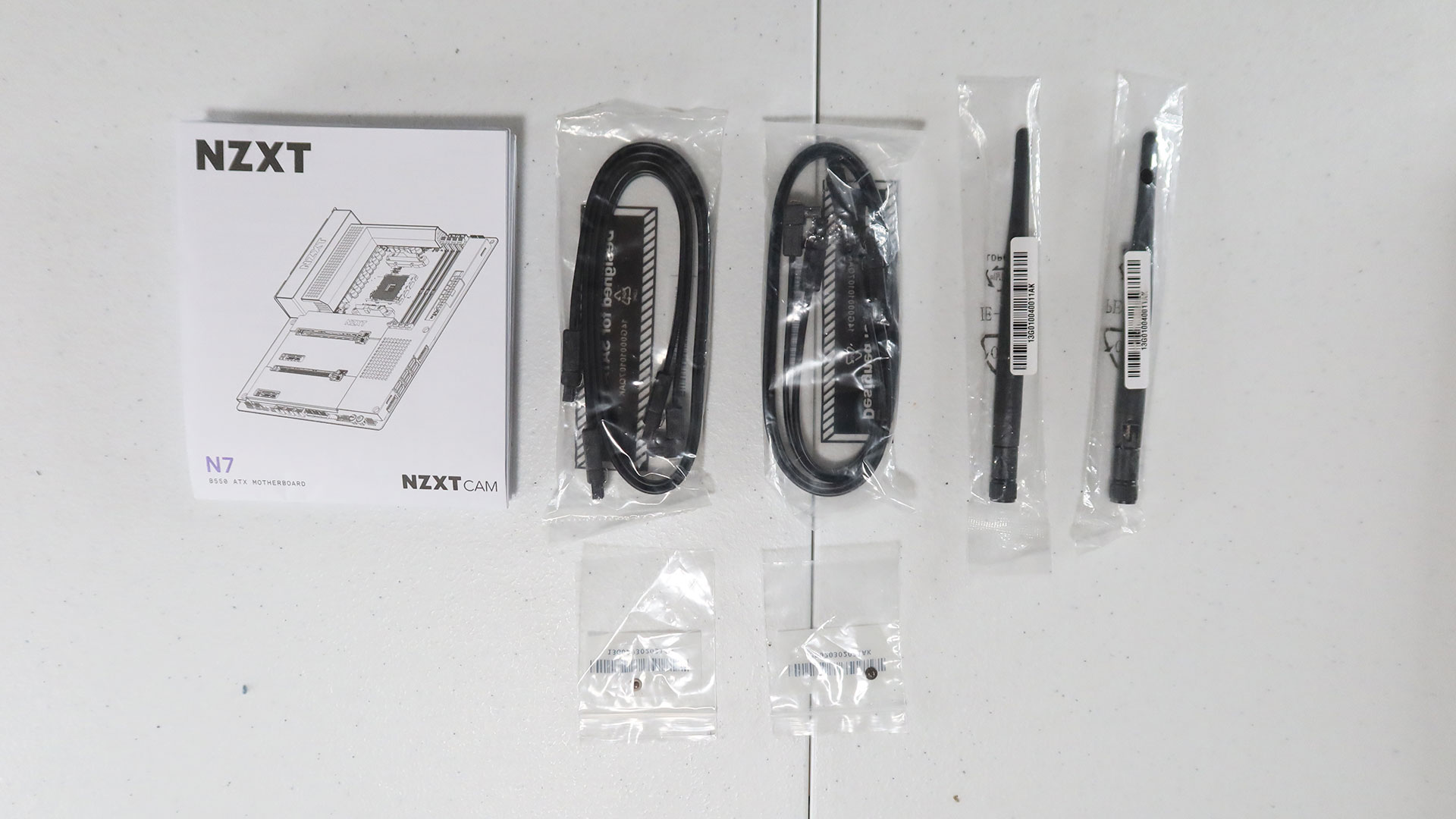
Design and Specifications
The N7 B550 retains the same style as its predecessors, with its flat shroud that covers most of the board. The shroud comes in either white or black, giving would-be buyers two options depending on their build’s theme. The design of the shroud carries over from the N7 Z490, which features an even more discreet look than the company’s first pair of motherboards, the N7 Z370 and the N7 Z390.
The new design eliminates some of the curves and angles of its previous design, particularly the area of the shroud above the chipset, the VRMs, and the rear I/O, and replaces them with flat panels. The perforated design is still present over the chipset and the VRMs, although the ones around the VRMs have been reduced as that portion of the shroud is now much thinner. The N7 B550 still features no built-in RGB lighting so those who like it will have to rely on other components and accessories.
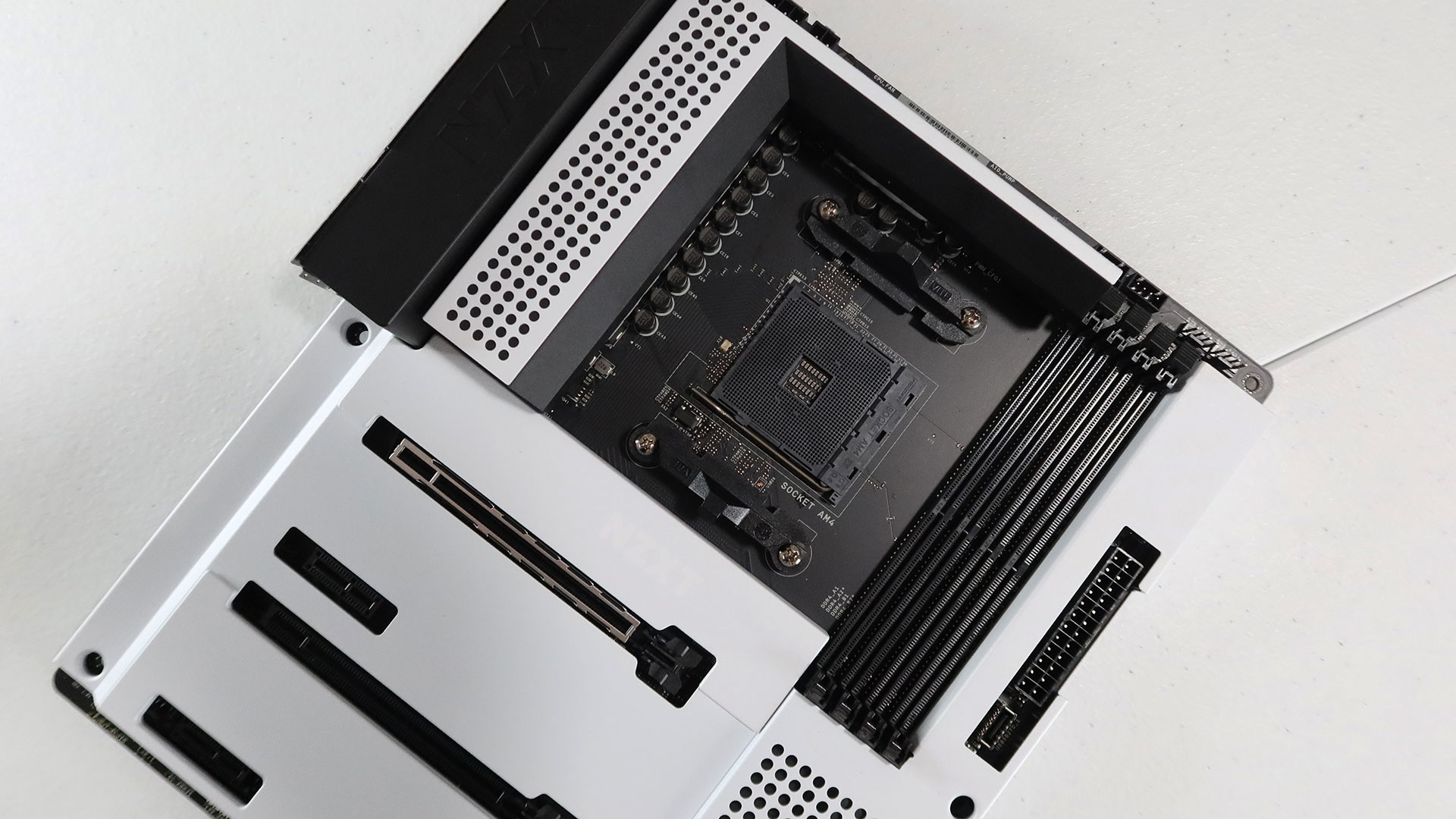
The design of the N7 B550 is still one of the most interesting in the market and is perfect for those who want a sleek and clean looking build. The white version in particular acts as a pretty good canvas to build upon.
Because of the shroud, NZXT has designed the layout N7 B550 to position most of its headers and connectors at its top and bottom edge. In order from left to right, the top edge features the two EPS connectors (one 8-pin and one 4-pin), a 4-pin CPU fan header, a 4-pin AIO pump header, two proprietary 4-pin NZXT RGB headers, and two more 4-pin fan headers.
As for the bottom edge, there’s the front panel audio connector, a UART header, a 3-pin ARGB header, a 4-pin RGB header, three USB 2.0 headers, three 4-pin fan headers, four debug LEDs, power and reset buttons, and the front panel header. Having three USB 2.0 headers helps the N7 B550 accommodate multiple components that require it, such as an AIO cooler or an RGB/fan controller.
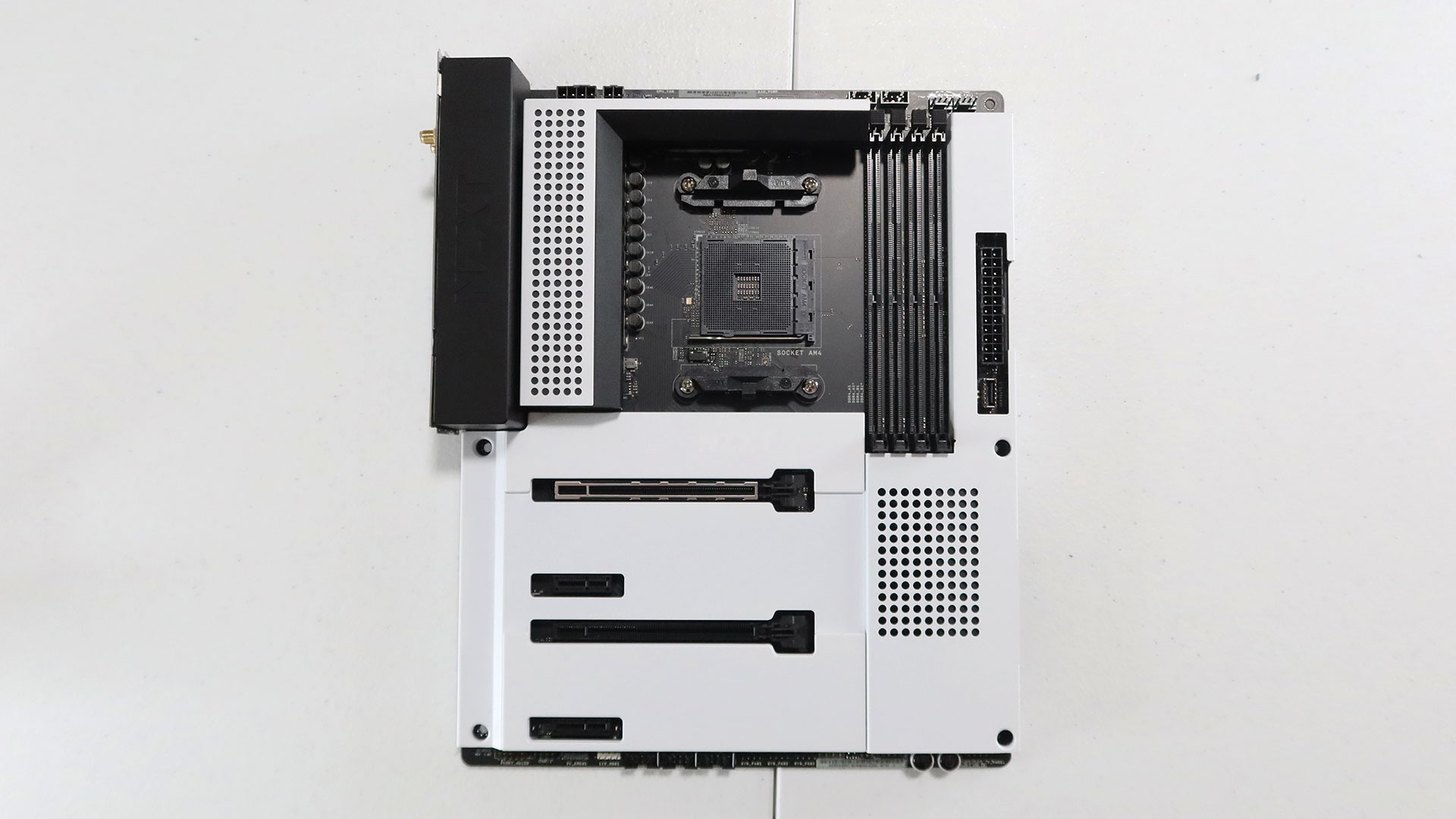
The rest of the headers can be found on the right edge of the N7 B550, which include the 24-pin ATX connector and a front-panel USB 3.2 Gen2 Type-C header below it. Lower on the right edge are six SATA ports and two front-panel USB 3.2 Gen1 headers, all of which are right-angled. While right-angled SATA ports are pretty normal, it’s a big plus for the USB 3.2 Gen 1 headers as the connectors and accompanying cable for them are usually pretty sizable so making the header right-angled makes it easier to both connect and conceal them.
While the header layout of the N7 B550 makes cable management easier, there may be some components with cables that are too short to reach one of the available headers. Fortunately, with five system fan headers and the potential for using a RGB/fan hub, such as the NZXT’s own RGB and fan controller, the location of the headers will not likely be an issue.
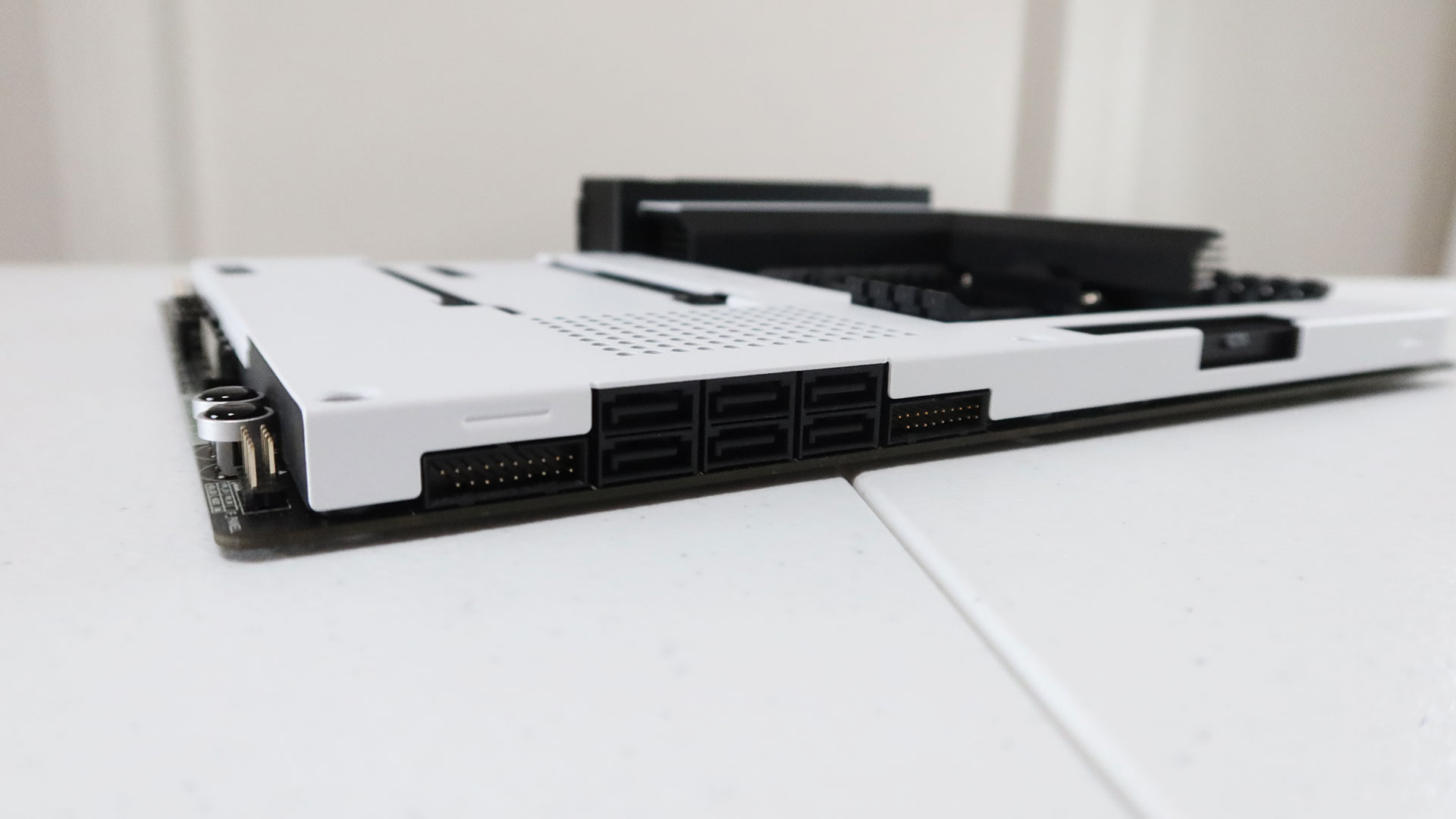
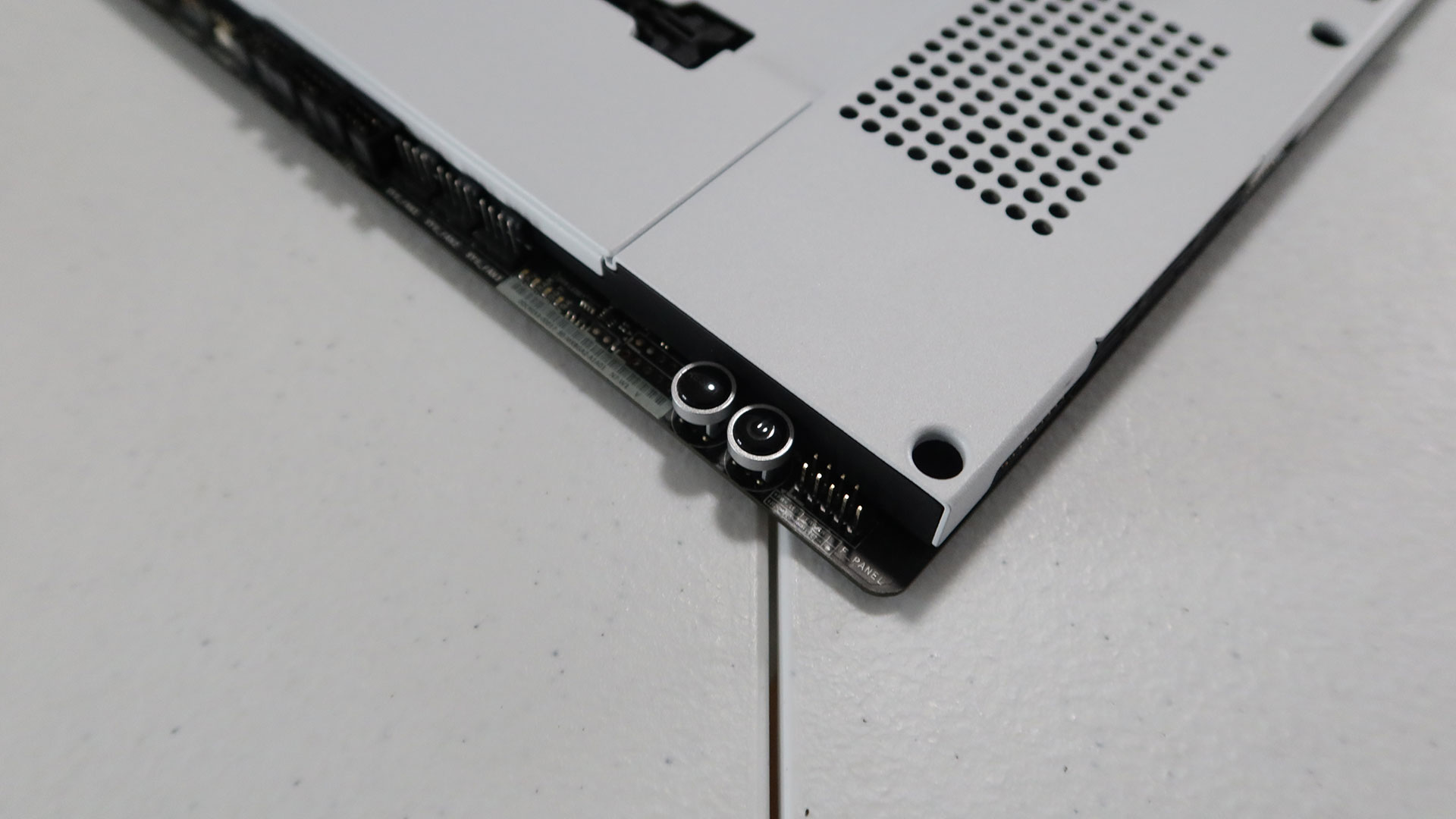
NZXT has also equipped the N7 B550 with four PCIe slots, including two full-length and two x1 size. The main reinforced slot is PCIe 4.0 while the lower one is PCIe 3.0 x4. Both the x1 slots are also PCIe 3.0. The two full-length slots also support AMD Quad Crossfire X and Crossfire X (2-card) configurations. NZXT has spaced the slots so that there is a bigger gap between them above the x1 slots than below to easily accommodate thicker GPUs.
The M.2 slots of the N7 B550 (located above and below the full-length PCIe slots, respectively) feature magnetic covers, which makes it incredibly easy to access slots themselves. However, they provide no cooling for the drives so users will have to either purchase ones with included heatsinks or run the risk of lower performance due to the drives running too hot. While it’s possible to simply purchase drives with included heatsinks, it would mean removing the M.2 slot covers altogether.
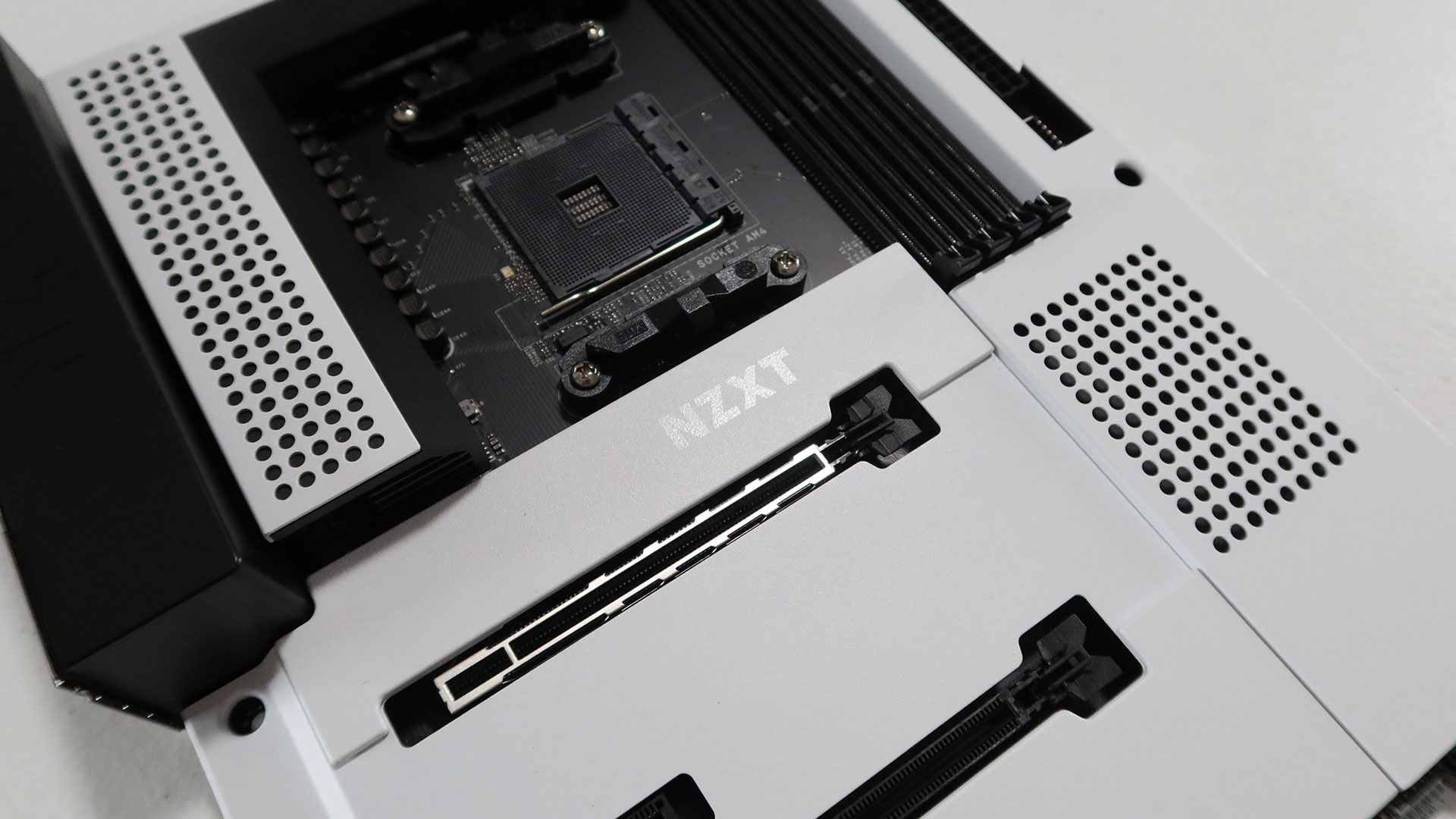
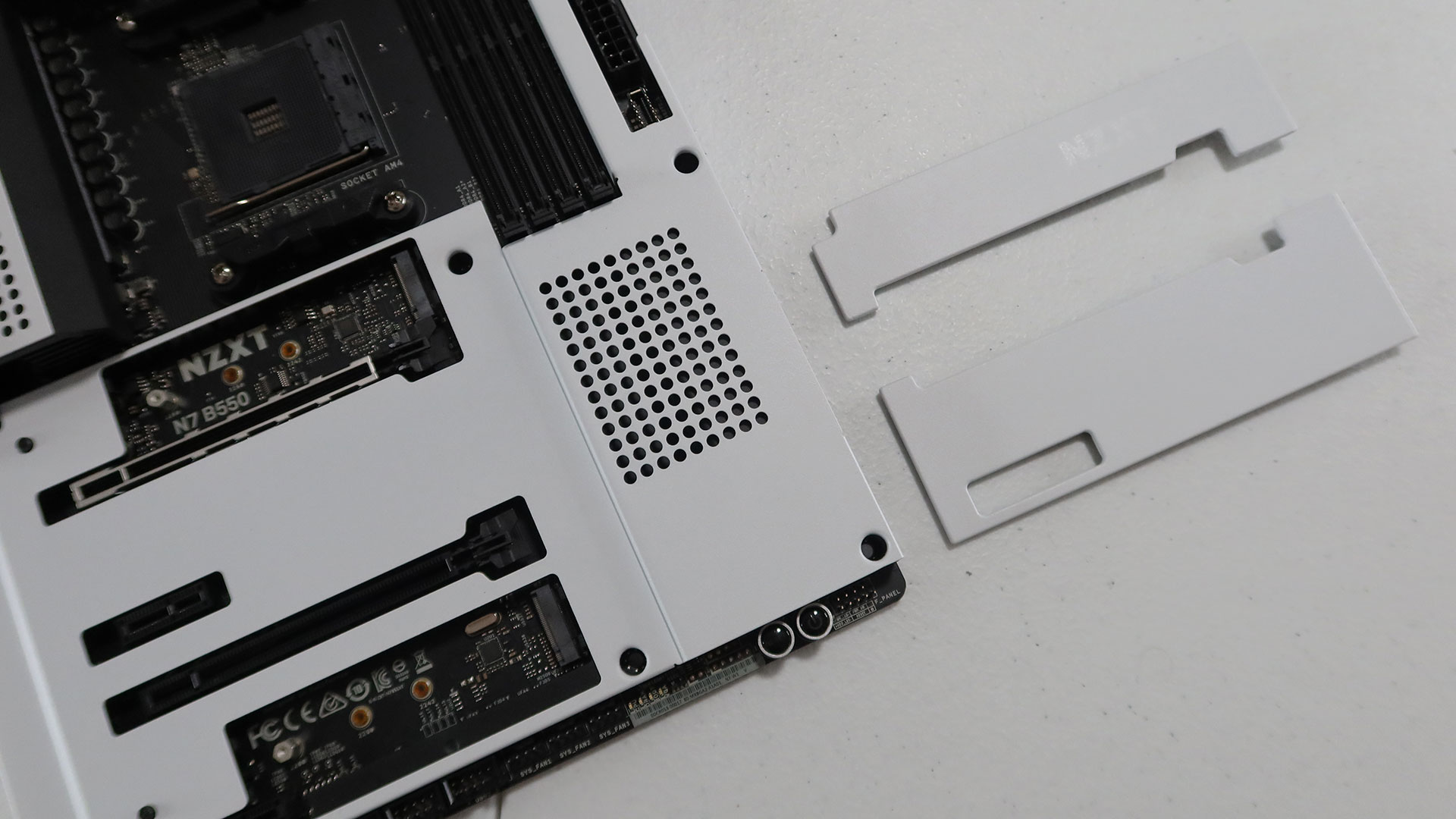
Features and Software
Going further with the N7 B550’s M.2 slots, while the top slot supports PCIe 4.0, the lower one only runs at PCIe 3.0 x2 and disables two of the six SATA slots the board is equipped with as they apparently share lanes. It’s a weird implementation when competing B550 boards are able to run the second M.2 slot at PCIe 3.0 x4 so it isn’t a limitation of the chipset but just a design decision on the part of NZXT and ASRock.
Thankfully, NZXT has made better decisions when it comes to the number of USB ports the N7 B550 is equipped with. Apart from the multiple internal USB headers, the rear I/O of the N7 B550 features a total of 10 USB ports (one USB 3.2 Gen 2 Type-C port, three USB 3.2 Gen 2 Type-A ports, USB 3.2 Gen 1 Type-A ports, and two USB 2.0 ports), which is more than many competing boards.
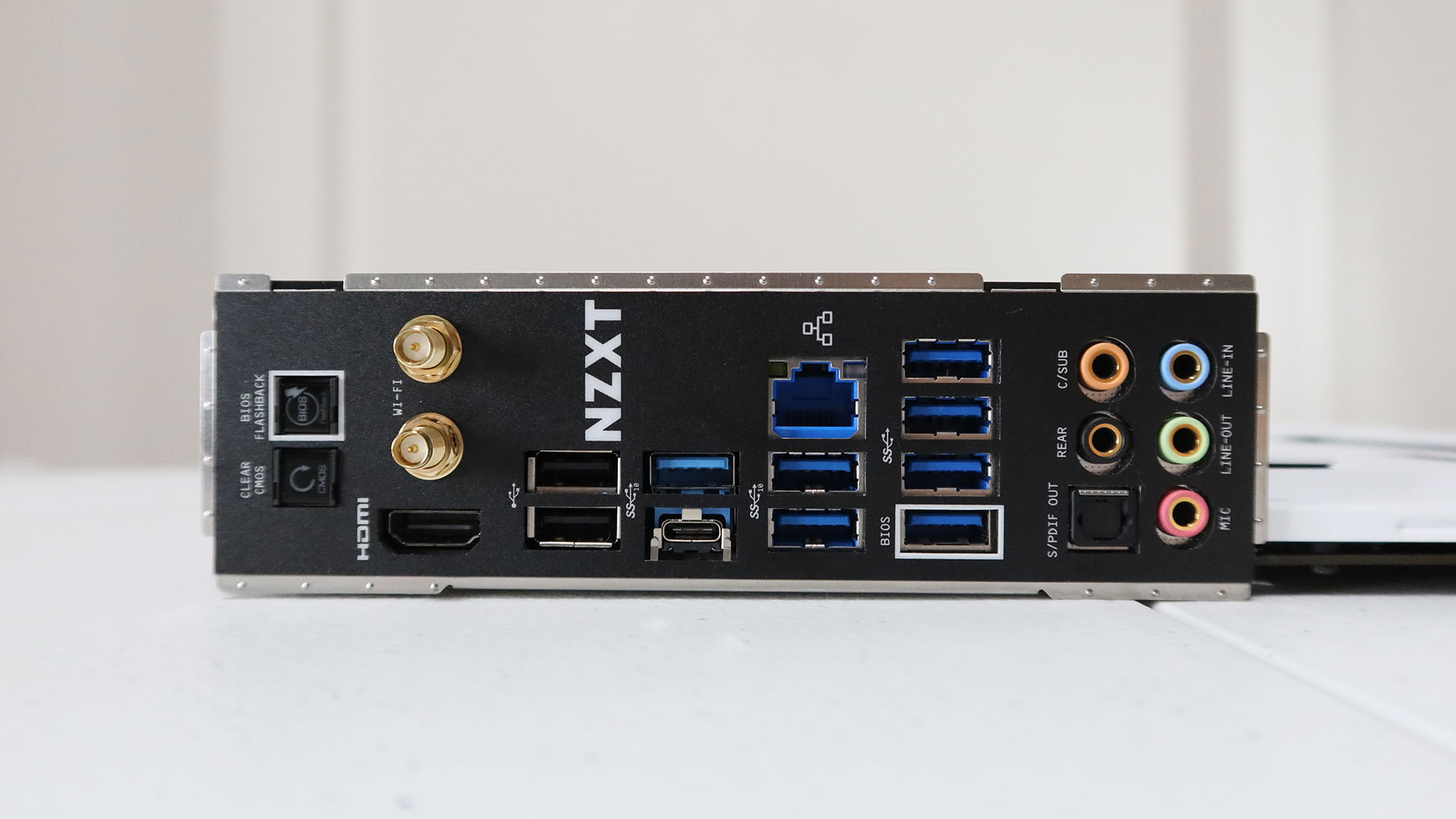
The rest of the rear I/O ports include the two Wi-Fi antenna connectors, an HDMI 2.1 port, an RJ45 LAN port, 5.1-channel audio jacks, and an S/PDIF port. The wired networking of the N7 B550 is handled by a Realtek RTL8125BG 2.5G Ethernet controller while Intel’s Dual-Band Wireless is in charge of the AX210 Wi-Fi 6E and Bluetooth 5.2. Lastly, the audio features Realtek’s ALC1220 Codec. There are also BIOS flashback and CMOS clear buttons near the top of the rear I/O cluster.
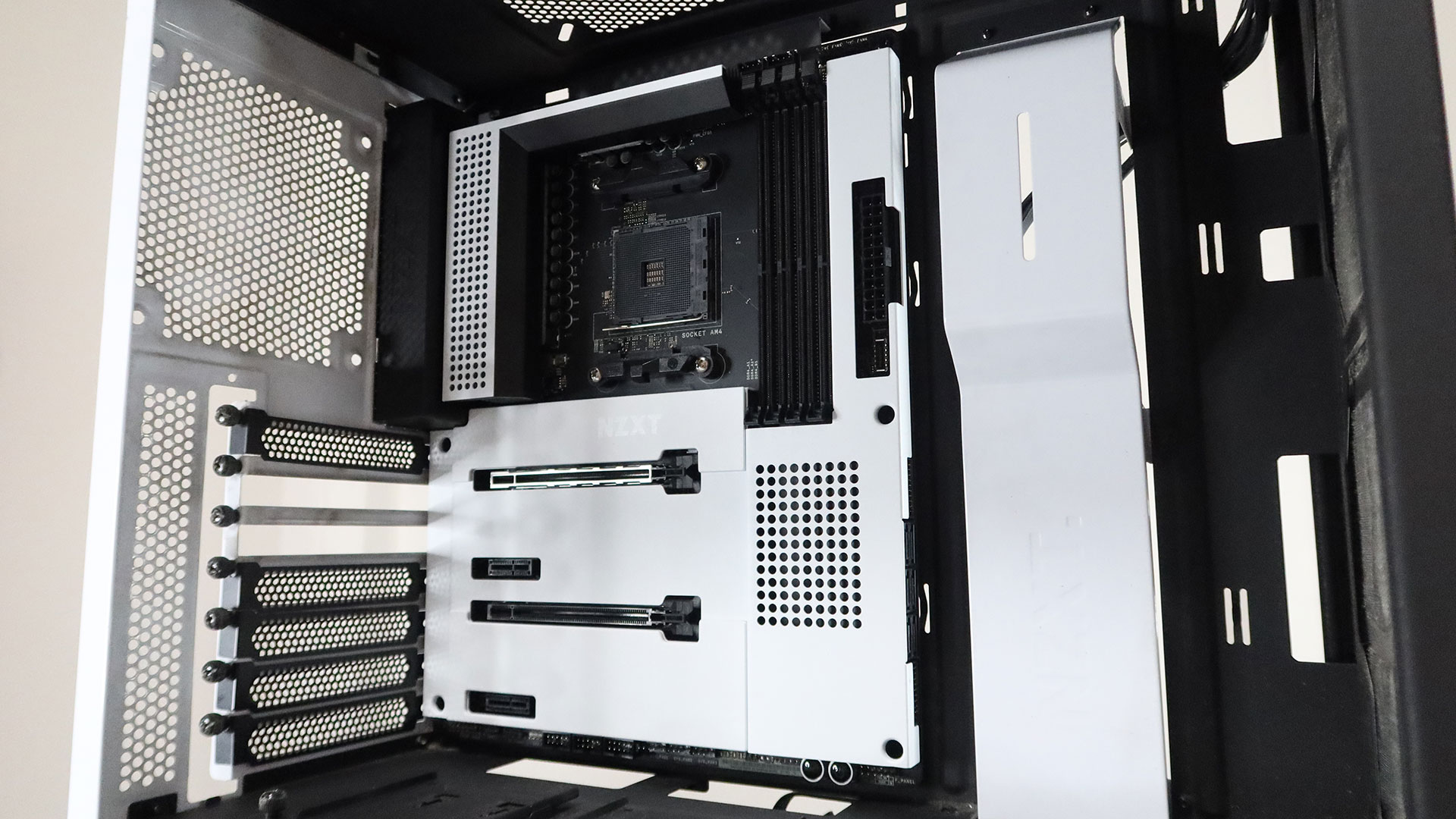
Speaking of the BIOS, the N7 B550 uses a reskinned version of ASRock’s BIOS. It’s easy enough to navigate and use, with only a few main tabs. While the interface looks slightly dated and it’s not as extensive as others, it has most of what most users will need. Particularly, it was very easy to overclock our RAM to 3600MHz by simply activating the proper XMP/DOCP profile. While we didn’t need to adjust any timings to get our overclock to stick, the interface is easy enough to navigate that it would be easy to do so if needed.
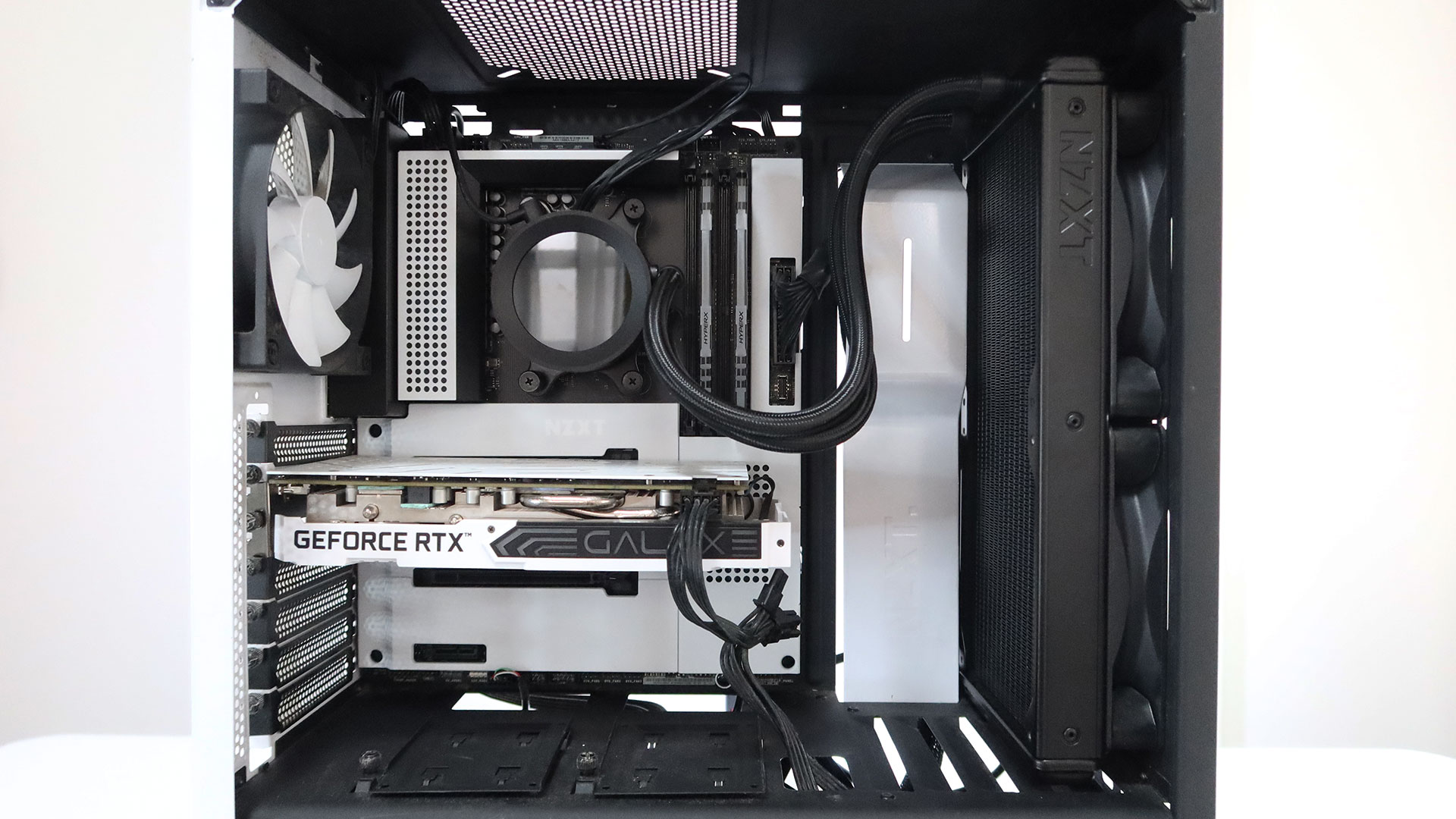
Apart from the BIOS, some of the other features of the N7 B550 can be controlled via NZXT’s CAM software. Much like the design of the N7 B550 or many of the NZXT’s products, the CAM software features a very simple and clean interface, which makes it very easy to navigate and use. It allows users to monitor several of the PC’s components, customize the lighting of any connected RGB components, adjust cooling profiles, manage the onboard audio, and more.
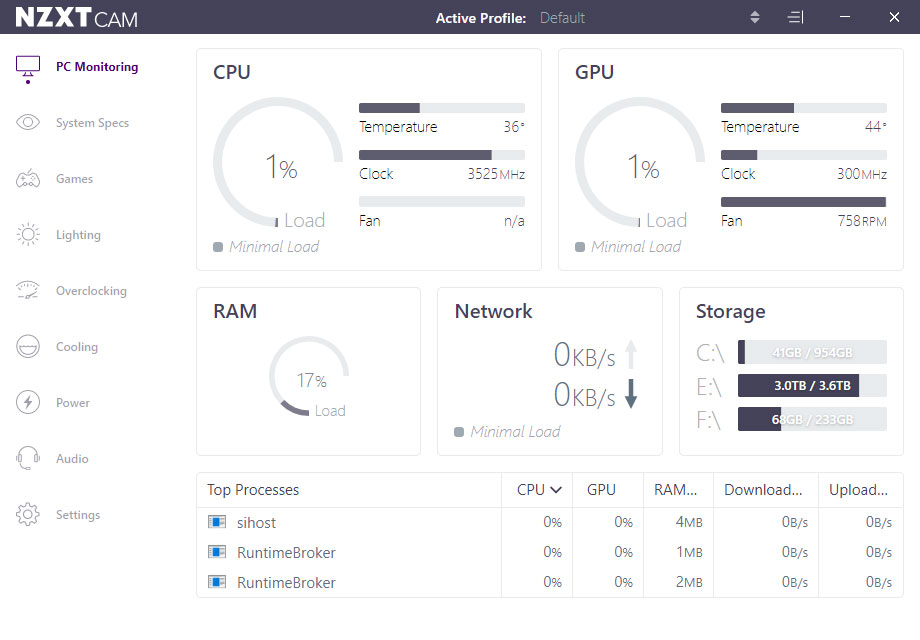
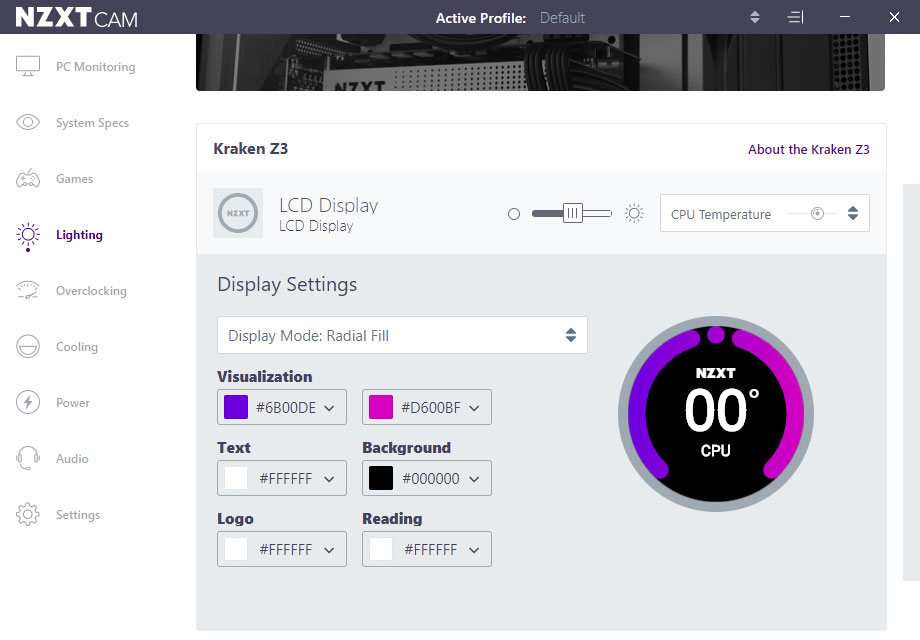
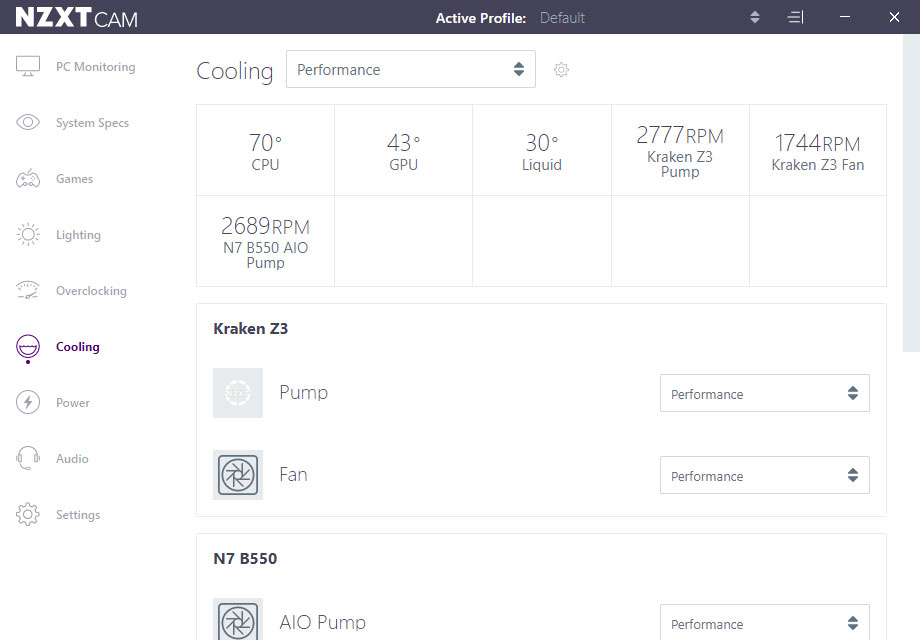
Conclusion
It’s obvious that a lot of the appeal of the NZXT N7 B550 comes from its design, which is by far one of the best-looking in the market. However, apart from its looks, the new motherboard from NZXT also offers quite a lot of great features. The include of Wi-Fi 6E and its numerous USB, fan, and RGB lighting options (if you’re using NZXT’s RGB headers) allows users a lot of freedom when building their rig with the N7 B550. While the implementation of its second M.2 slot is disappointing and the lack of built-in cooling for both is troubling, the rest of its offerings put it toe to toe against some of the B550 motherboards from the veterans of the industry. Those looking for a capable and feature-filled B550 motherboard for their AMD Ryzen build should definitely consider the NZXT N7 B550 as one of their top choices.



